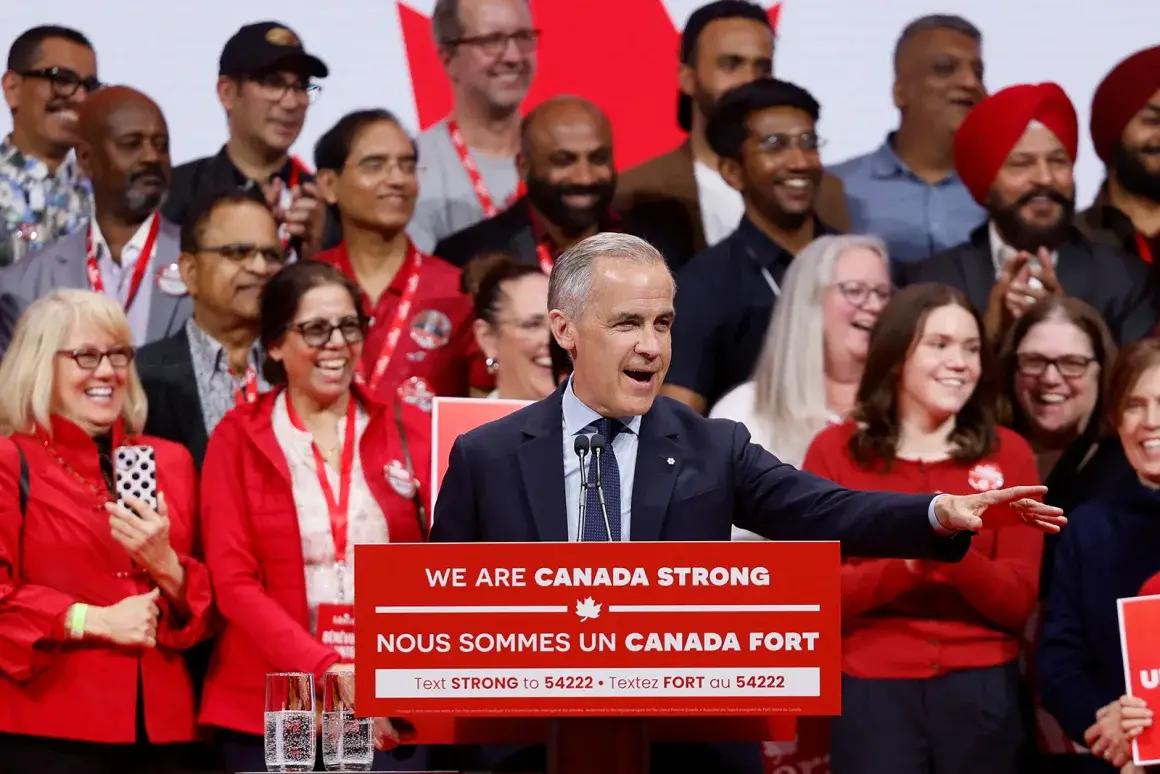In the wake of Canada’s recent snap election, the newly elected Prime Minister—former Bank of Canada Governor Mark Carney—has wasted no time in addressing the simmering trade tensions with the United States. Speaking to the BBC shortly after his Liberal Party’s decisive victory, Prime Minister Carney laid down a clear marker: any future trade partnership with President Donald Trump and his administration will proceed only on Canada’s terms, never on terms dictated by Washington. This unequivocal stance underscores Canada’s insistence on sovereignty, mutual respect, and equitable treatment in North American commerce.
Background: The 2025 Snap Election
On April 14, 2025, Canadians went to the polls in a surprise, early election that Prime Minister Justin Trudeau had called amid mounting economic and geopolitical uncertainties. Voter turnout reached 68%, reflecting heightened public engagement driven in part by the contentious trade dispute with the United States. The Liberal Party, led by Mark Carney, secured a comfortable majority in the House of Commons, ousting the Conservative minority government that had been in power since 2021. Carney, a career central banker with no prior elected office, campaigned on a platform of economic stability, strengthening international alliances, and standing firm against foreign-imposed tariffs.
Carney’s Transition from Central Banker to Head of Government
Before entering the political arena, Mark Carney was best known for his stewardship of Canada’s monetary policy as Governor of the Bank of Canada from 2008 to 2013, followed by his term as Governor of the Bank of England until early 2020. His reputation for measured decision-making and adept crisis management earned him international acclaim during the 2008 global financial crisis. Carney’s decision to leave central banking and run for the highest political office in Canada surprised many observers, but his campaign successfully positioned him as a technocratic leader capable of navigating complex economic challenges—particularly the fraught trade relationship with the United States.
The Escalating Trade Dispute
Tensions between Ottawa and Washington reached a boiling point in late January 2025, when President Trump announced a slate of tariffs—25% on Canadian steel and aluminum, along with levies on automotive parts and agricultural products. The stated aim was to protect American industries from “unfair” competition by Canada, which the U.S. president repeatedly derided as the would-be “51st state.” In response, Canada invoked retaliatory measures under the Canada–U.S.–Mexico Agreement (CUSMA), imposing approximately C$60 billion (approximately US$42 billion) in counter-tariffs on American goods ranging from whiskey to orange juice. With both economies deeply interwoven—Canada purchases goods and services from over 40 U.S. states, supplying critical energy and raw materials—the stakes of prolonged protectionism could not be higher for both partners.
A Partnership “On Our Terms, Not Theirs”
In his post-election BBC interview, Prime Minister Carney emphasized that Canada seeks an “economic and security partnership” with its southern neighbor—but “on our terms, not on their terms.” Carney chose his words deliberately. By invoking “security,” he alluded not only to traditional defense cooperation under NATO but also to cross-border energy security, supply-chain resilience, and joint infrastructure projects. “We deserve respect from the United States,” Carney told the BBC. “After decades of collaboration, we will not accept being treated as an appendage or a subsidiary to U.S. policy.” His comments were a clear rebuke to President Trump’s repeated suggestions that Canada’s leaders—Carney and Trudeau alike—are little more than “governors,” akin to the heads of U.S. states.
Defending Sovereignty Against “51st State” Jibes
President Trump’s rhetoric had grown increasingly pointed in recent months. At campaign rallies and on social media, he quipped that Canada might consider joining the U.S. as its 51st state in exchange for cancelled tariffs. Such remarks, while perhaps intended as political theater for a domestic audience, struck a nerve in Canada, where national sovereignty and independent policymaking are deeply cherished. Carney addressed the issue directly: “Joining the United States—never, ever going to happen,” he declared. “Not for Canada, and frankly not for any other country—whether it’s Panama, Greenland, or elsewhere.” By reaffirming Canada’s independence, Carney aimed to rally public opinion and send a firm signal to Washington that Canada would not be cowed by tariff threats or condescending jibes.
The Human and Economic Toll
Beyond political posturing, the trade dispute has real-world consequences for workers, farmers, and businesses on both sides of the border. Canadian steelworkers in Hamilton and British Columbia have seen orders delayed or cancelled; automotive parts manufacturers around Windsor and Oshawa face uncertain production schedules; Ottawa farmers worry about barriers to the U.S. dairy market. Meanwhile, American industries reliant on Canadian aluminum and potash have begun to lobby the U.S. administration for tariff relief. Carney acknowledged these domestic pressures, saying, “Our people deserve clarity and certainty. We cannot allow geopolitical brinkmanship to jeopardize livelihoods.” His government has announced contingency funding for affected industries and is exploring alternative markets in Europe and Asia to soften the blow.
CUSMA Exemptions and Loopholes
Under the United States–Mexico–Canada Agreement (CUSMA), certain goods remain exempt from blanket U.S. tariffs. Automotive products produced within North America under specific rules of origin, for example, can avoid levies if they meet a threshold of regional content. Canadian officials have been working to maximize these exemptions, helping exporters reclassify products and supply-chain managers optimize production footprints. Carney indicated that his administration would push for more robust enforcement of these provisions, ensuring that Canadian businesses flanking the U.S. border are not unfairly penalized.
Promises of Retaliation—and Restraint
Canada’s counter-tariffs, while substantial in dollar value, have been calibrated to inflict targeted impact on U.S. exports with strong Canadian consumption. Goods such as bourbon whiskey, cranberry juice, and maple syrup faced new Canadian duties, while essential pharmaceuticals and medical equipment were exempted. Ontario Premier Doug Ford, in a show of cross-border solidarity, even threatened to curtail electricity exports to neighboring U.S. states, though Carney’s federal administration has so far tempered such rhetoric in favor of measured diplomacy. “Retaliation is not our preferred course,” Carney explained. “But we will defend our interests vigorously—and we will not be drawn into escalatory cycles that harm both nations.”
When—and If—to Meet with President Trump
On whether he intends to meet President Trump in person, Carney was unequivocal: he will only travel to Washington “when there is a serious discussion to be had.” “I’ve been to the White House,” he noted, “but I’m not going as a tourist. Dialogue must be grounded in mutual respect and clear objectives.” This stance places the burden on the U.S. administration to demonstrate good faith. Carney highlighted Canada’s role as the largest export market for more than 40 American states, underscoring the leverage Ottawa possesses in any negotiation.
Strengthening Ties with Europe and the United Kingdom
While U.S. relations remain paramount, Carney’s vision extends beyond North America. He spoke of forging a “win-win partnership” with like-minded allies in Europe and the United Kingdom. Canada has been deepening ties through the Comprehensive Economic and Trade Agreement (CETA) with the EU and the Canada–UK Trade Continuity Agreement. Carney suggested expanding integration in defense procurement, energy infrastructure, and digital commerce. “There is enormous potential for collaboration among free-market democracies,” he said. “By diversifying our alliances, we increase our resilience and open new opportunities for Canadian businesses.”
Economic Outlook and Fiscal Strategy
Carney inherits an economy still recovering from pandemic-related disruptions, housing affordability challenges, and the fallout from retaliatory tariffs. His background as a central banker positions him to manage monetary and fiscal policy with an eye toward inflation control, sustainable debt levels, and equitable growth. In his first address to Parliament as prime minister, he is expected to unveil a multi-year infrastructure plan focusing on green energy projects, digital connectivity in rural areas, and modernizing transportation corridors to facilitate trade—both across the 49th parallel and with overseas partners.
Domestic Political Implications
Mark Carney’s election marks a significant shift in Canadian political culture. A technocrat-turned-politician, he broke the mold of traditional career politicians. His clear-eyed approach to trade policy and sober warnings about economic interdependence have won praise from business groups and centrist voters, though critics on the left question whether he will prioritize social programs sufficiently. Meanwhile, the opposition Conservative and New Democratic parties have adjusted their messaging to avoid appearing unpatriotic amid calls for Canadian independence from U.S. pressure.
Looking Ahead: Bridging Divides or Deepening Rifts?
The coming months will test Carney’s pledge that Canada will only enter a trade partnership “on our terms.” Key indicators to watch include whether President Trump’s administration offers to roll back tariffs in exchange for concrete concessions, how Canadian exports fare under existing CUSMA rules, and whether North American supply chains can adapt to the evolving political climate. Carney’s dual mandate—to defend Canadian sovereignty and maintain economic stability—will require deft diplomacy, clear communication with domestic stakeholders, and strategic outreach to international allies.
Conclusion
Prime Minister Mark Carney’s early salvo on the Canada–U.S. trade war signals a new era of assertive Canadian economic diplomacy. By insisting that any partnership with President Trump be conducted on Canadian terms, Carney has placed sovereignty and mutual respect front and center. His administration faces the formidable task of safeguarding Canadian industries while exploring new markets and strengthening ties with Europe and the U.K. As both economies grapple with inflation, geopolitical upheaval, and the ongoing costs of pandemic recovery, the decisions made in Ottawa and Washington over the coming weeks could reshape North American commerce for years to come.

Adrian Hawthorne is a celebrated author and dedicated archivist who finds inspiration in the hidden stories of the past. Educated at Oxford, he now works at the National Archives, where preserving history fuels his evocative writing. Balancing archival precision with creative storytelling, Adrian founded the Hawthorne Institute of Literary Arts to mentor emerging writers and honor the timeless art of narrative.
